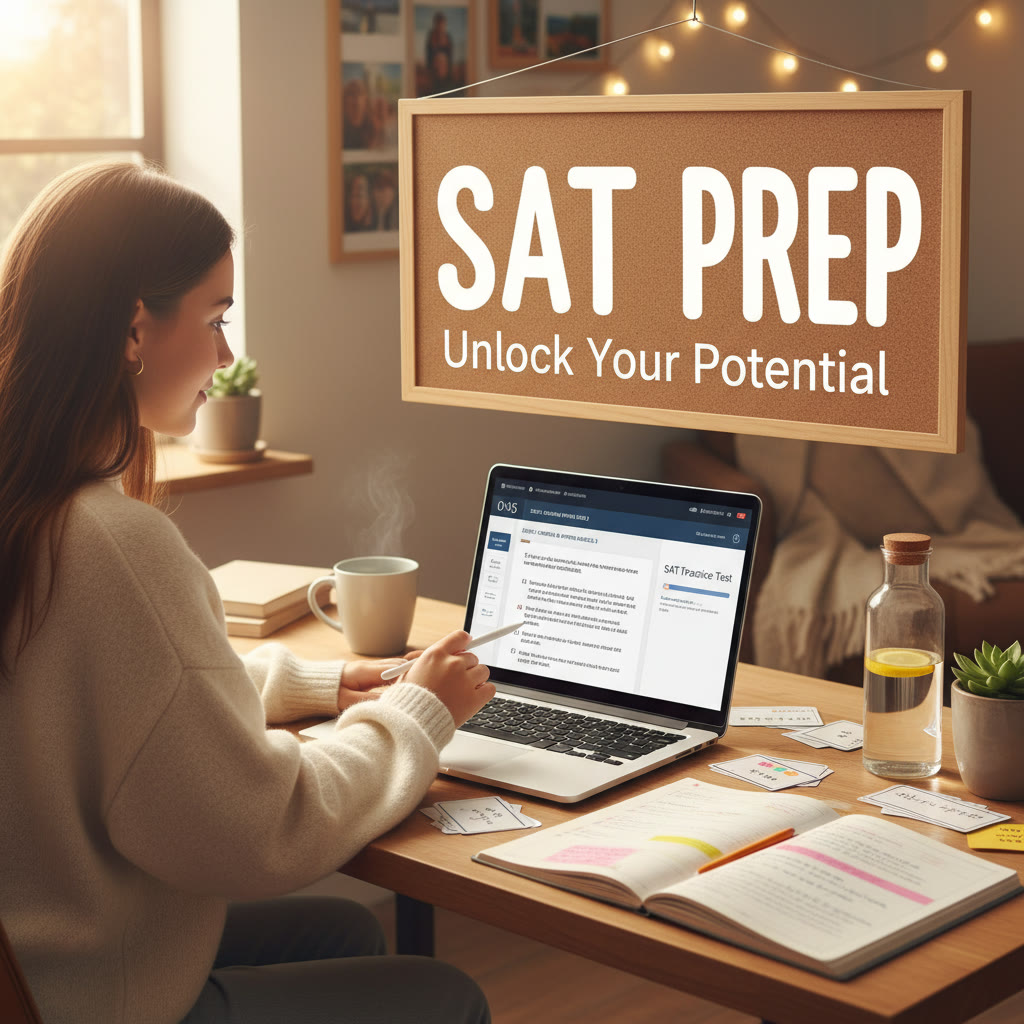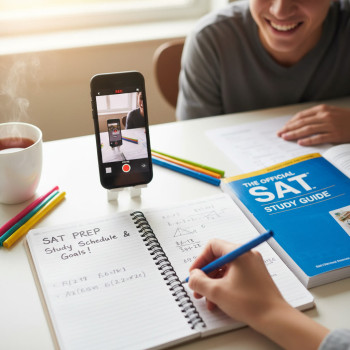Which Ivy League Is Easiest to Get Into Based on SAT Scores (and what that really means)
First — take a breath. The phrase “easiest Ivy to get into” is a bit of shorthand that masks a more nuanced truth. Admission to any Ivy League school is highly competitive. But if you’re focusing only on SAT score ranges — the number many students obsess over — some Ivies have historically admitted students with slightly lower average SAT ranges than others. That doesn’t make them easy, but it does change how you build a realistic target and application strategy.

Why SAT score comparisons matter — and why they don’t tell the whole story
SAT scores are one important part of a college application, but they’re only one piece. Colleges look at academics, course rigor, essays, recommendations, extracurricular impact, and fit. Still, knowing the SAT landscape helps in three ways:
- It sets a realistic target score for test prep and time investment.
- It helps shape your college list into reach, match, and safety schools.
- It guides which parts of your application to emphasize if your score is below an institution’s typical range.
Reality check: test-optional and the Digital SAT
Remember that many schools have kept flexible testing policies in recent years. Some Ivies have adopted test-optional or test-flexible approaches at various times, and the SAT itself moved to a digital format. That means:
- Admissions offices may interpret scores in context — by school, by year, and by your academic profile.
- The digital SAT shortens testing time and shifts question types, so preparation strategies have changed.
- Even when test-optional, a strong SAT can still strengthen an application and open scholarship opportunities.
Quick comparative table: Ivy League schools and typical SAT profile (conceptual overview)
This table is meant to give a practical, conceptual snapshot for families building targets. Numbers are illustrative ranges that reflect admitted student profiles: use them to set goals, not as guarantees.
| School | Typical Middle 50% SAT Range (Composite) | Admissions Context |
|---|---|---|
| Harvard | Very high (top end of scale) | Extremely selective; scores often among the highest. |
| Yale | Very high | Highly selective; holistic review. |
| Princeton | Very high | Strong academic focus; research and fit matter. |
| Columbia | Very high | Urban, diverse applicant pool; intellectual curiosity prized. |
| Penn | Very high (slightly wider spread) | Undergraduate programs vary; specialized schools influence targets. |
| Dartmouth | Very high (narrow) | Emphasizes community fit, outdoors culture, and leadership. |
| Brown | Very high (slightly broad) | Open curriculum; creative and self-directed applicants shine. |
| Cornell | Very high (broadest range) | Most varied academically; certain colleges within Cornell have lower median scores than others. |
Put simply: if you’re comparing SATs only, Cornell has historically shown the widest range of accepted SAT scores across its many colleges, which sometimes translates into relatively lower median scores for particular programs. That’s why many counselors — and many students — tentatively label Cornell as the “easiest” Ivy by SAT numbers alone. But the real picture depends on program choice, year-to-year variation, and fit.
Why Cornell often appears more accessible by SAT numbers
Cornell operates not as a single monolith but as a federation of colleges and schools — engineering, arts and sciences, agricultural sciences, hotel administration, and more. That structure creates a few practical effects:
- Different colleges within Cornell set different academic and SAT expectations, so the overall range is wider.
- Some programs emphasize portfolio, audition, or specific coursework, which shifts how scores are weighed.
- A broader applicant pool with specialized majors can produce more variation in admitted SATs year to year.
So, if you’re applying to a specific school within Cornell (for example, Hotel Administration or Engineering), look closely at the profile for that school, not the university-wide number.
How to use this information to build a smart SAT and application plan
Knowing that Cornell may have the broadest SAT spread is useful, but it shouldn’t dictate your whole approach. Here’s how to turn insight into action.
1. Set a realistic, personal target
Don’t chase a number you don’t have time or aptitude to reach. Instead:
- Identify a target SAT that places you comfortably in the middle 50% for your desired program.
- Plan backward: estimate months of prep, practice tests, and content review.
- Factor in the digital SAT format — practice on digital platforms to adjust pacing and question navigation.
2. Build a balanced college list
Use SAT ranges to categorize schools into reach, match, and safety, but always pair numerical fit with program fit. If you love a school’s culture, find ways to show that in essays and interviews.
3. Leverage strengths outside of standardized tests
If your SAT is slightly below a school’s middle 50%, strengthen other parts of your application:
- Showcase challenging coursework and upward grade trends.
- Craft authentic essays that tell a clear story — passion, leadership, resilience.
- Collect strong recommendations that speak to your academic and personal qualities.
Real-world examples and comparisons
Imagine two students targeting Ivies:
- Aisha has a high SAT, excellent grades, but limited extracurricular depth. Her goal: showcase intellectual curiosity in essays and pursue interviews to add personality to her application.
- Jamal has a strong academic record with a mid-range SAT (for Ivies). He has deep, sustained extracurricular commitment in community health. His strategy: emphasize impact through essays, highlight recommendation letters from local mentors, and — where helpful — submit a strong SAT superscore or optional subject demonstration.
Both students are competitive because they present coherent, genuine narratives. Neither relies purely on a single number.
How parents can support without micromanaging
This phase can feel like walking a tightrope: you want to help and also let your student own the journey. Practical steps:
- Be the organizer: calendars, deadlines, and test registrations matter.
- Encourage consistent practice over last-minute cramming.
- Seek outside help when needed — tutoring, essay coaching, or subject-specific support.
For example, many families choose targeted, short-term tutoring to lift a score by 50–100 points or to clarify testing strategy. Personalized help — like Sparkl’s 1-on-1 guidance, tailored study plans, and expert tutors with AI-driven insights — can be especially effective because it fits the student’s learning style and schedule rather than offering generic lessons.
Digital SAT prep: what’s different and how to adapt
The digital SAT changes pacing, question presentation, and interface. Here’s how to prepare sensibly:
- Practice in a digital interface to mimic timing and navigation.
- Do full-length practice tests to build endurance and time management.
- Focus on question types that now reward strategic reading and stepwise logic.
Quality over quantity remains the rule. A targeted plan that improves weak areas (e.g., evidence-based reading strategies or algebraic fluency) is more impactful than blind hours of study. Tutors who use diagnostic data — and tweak plans based on progress — can accelerate gains. That’s why many families appreciate Sparkl’s diagnostic-driven, individualized approach: it helps students use their prep time more efficiently and track gains in measurable ways.
Practical timeline: when to start, test, and apply
Here’s a simple timeline you can adapt:
- Junior year spring: take practice diagnostic tests and plan an SAT prep timeline.
- Summer before senior year: intensive prep block (content review + strategy + practice tests).
- Senior fall: sit for one or two SAT dates early enough to send scores to colleges before application deadlines or to allow a retake.
- Before applying: complete essays, get recommendations, and refine your school list.
Sample study plan (12 weeks) — focused and flexible
This is an adaptable blueprint for steady improvement:
- Weeks 1–2: Diagnostic test, identify weaknesses, set a target, and make a study calendar.
- Weeks 3–6: Core content review (math strands, evidence-based reading strategies, grammar fundamentals) with weekly practice sections.
- Weeks 7–9: Strategy and pacing — full practice tests every 7–10 days, targeted review after each test.
- Weeks 10–12: Polish: focus on high-yield question types, calming test-day routines, and logistics (testing center, materials, rest).
One-on-one tutoring sessions during this period can adapt the plan to a student’s exact pace: spend more time on algebraic problem solving for one student, and on passage mapping for another. Personalized tutors and AI-driven insights help prioritize the topics that move the needle most quickly.
How to interpret your score relative to an Ivy program
Two important ideas:
- Look at program-specific profiles when available. Engineering at one university may have different averages than humanities at the same school.
- Consider the entire application. A lower SAT can be offset by exceptional subject mastery, research, or a compelling story.
Example: applying to engineering vs. arts within the same Ivy
An engineering program may trend toward higher quantitative scores. If your math score is at or above that program’s typical range, you’ll be stronger even if your composite is slightly below. Conversely, a strong writing and evidence-based reading score can help in humanities-focused programs.
Decision time: choose your battles
Every family’s resources and timeline differ. Some students benefit from months of sustained self-study; others do better with a short, focused tutoring burst that targets weakness areas and simulates test conditions. Key questions to ask before investing time or money:
- How many realistic SAT points are needed to shift a school from “reach” to “match” for this student?
- How much time can the student sustainably commit each week?
- Which parts of the application already shine and which need support?
When in doubt, targeted, personalized help often trumps generic programs. Tailored study plans, regular diagnostic checks, and tutors who adjust instruction based on progress make study time more productive. Sparkl’s model is built around these ideas — combining expert tutors with tailored plans and AI-informed diagnostics to keep students improving efficiently.
A final, practical checklist for families
- Create a realistic SAT target based on your top-choice programs, not general perceptions.
- Practice on digital platforms to get comfortable with the new format.
- Use full practice tests regularly to build stamina and evaluate progress.
- Make a balanced school list of reach, match, and safety schools — consider Cornell for program-specific fits where SAT ranges are broader.
- Strengthen non-test parts of the application: essays, recommendations, and demonstrated impact.
- Consider short-term, high-impact tutoring if you need a targeted score boost or strategy overhaul.

Parting thoughts: numbers help, but story wins
Yes, SAT scores matter. They shape where you should aim and how much time to invest in prep. But colleges — especially Ivies — read the whole application: your intellectual vitality, the trajectory of your grades, the depth of your interests, and the clarity of your voice in essays. If a single Ivy looks more accessible by SAT numbers, use that knowledge wisely: tailor your application to highlight fit, pursue meaningful experiences, and present a cohesive, honest narrative.
Finally, remember that support is available. Whether it’s a targeted tutoring push to raise a test score or long-term coaching to shape an application, personalized help can change outcomes. Approaches that combine 1-on-1 guidance, custom study plans, experienced tutors, and data-driven feedback — like those offered by Sparkl — often help students make the most efficient gains without burning out.
Ready to take the next step?
Start with a diagnostic: take a practice digital SAT under realistic conditions, review the results, and build a plan. If your family wants a focused path forward, consider a short trial of one-on-one support to see how tailored instruction and a clear study roadmap can boost confidence and scores. The Ivy dream is ambitious — but with the right preparation and a smart application strategy, it’s within reach.
Good luck, and remember: your college fit is about much more than a number. Keep learning, stay curious, and let your unique voice shine through every part of the application.

















No Comments
Leave a comment Cancel